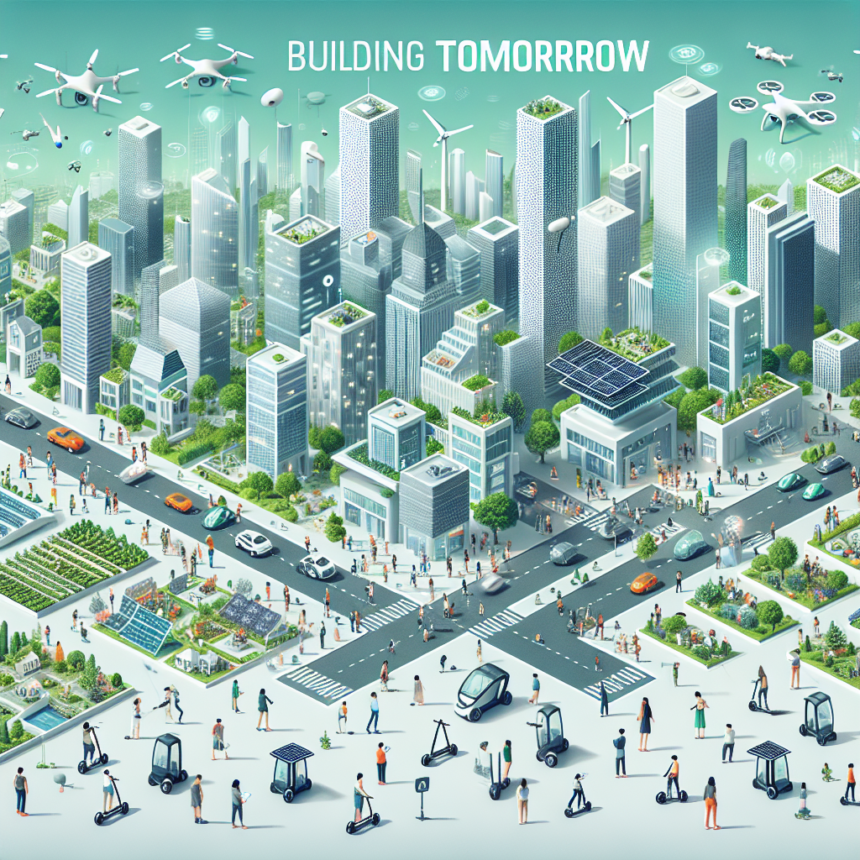Building Tomorrow: How Smart Cities Are Shaping Our Urban Future
As urbanization accelerates, with more than half the world’s population residing in cities, the concept of smart cities is evolving as a solution to the complex challenges cities face today. Smart cities utilize digital technology to enhance performance, address urban challenges, and improve the quality of life for their inhabitants. By integrating data, connectivity, and innovation, these cities aim not only to streamline municipal services but also to incorporate sustainability goals and enhance community engagement.
The Essence of Smart Cities
At the core of a smart city is the ability to harness data to optimize city management and improve citizen services. Cities are increasingly investing in sophisticated algorithms, Internet of Things (IoT) devices, and big data analytics to monitor various urban functions. This ecosystem includes smart transportation systems that reduce congestion, smart energy grids that optimize energy consumption, and adaptive waste management systems that help manage resources effectively.
Moreover, smart cities promote sustainability through initiatives like urban green spaces, energy-efficient buildings, and renewable energy resources. By cultivating sustainable practices, these cities aim to reduce their carbon footprints and promote healthier living environments.
Infrastructure and Technology
To effectively facilitate these transformations, smart city infrastructure must be robust and well-organized. Connectivity is paramount; various platforms are required to enable seamless data exchange among city departments and residents. This is where technologies like 5G and edge computing play an integral role, providing the necessary bandwidth and speed to support high data flow and real-time responses.
Furthermore, intelligent transportation systems (ITS) are transforming how urban mobility is perceived. Features such as smart traffic lights, public transport app integrations, and automated vehicle parking reduce travel times and enhance safety. These systems are not only improving efficiency but also decreasing pollution and resource consumption.
Community Engagement
A pivotal aspect of successful smart cities is citizen involvement. Engaging the community in urban planning and governance ensures inclusivity, fosters a sense of ownership, and enhances the effectiveness of services. Smart city initiatives encourage open data platforms, enabling residents to access valuable information related to city management and contribute to decision-making processes.
Furthermore, the integration of user-friendly apps allows residents to report issues like potholes, broken streetlights, or waste management problems directly to city officials, creating a dynamic feedback loop. This participatory model improves accountability and transparency between citizens and government, ensuring urban growth aligns with community needs and expectations.
Case Studies in Action
Taking a closer look at some successful smart cities can provide insight into effective strategies and technologies:
-
Singapore is often cited as a leading smart city. It utilizes an extensive network of sensors to monitor traffic, environmental conditions, and public safety. The central command center harnesses real-time information to manage everything from transportation flow to emergency response efficiently.
-
Barcelona makes use of IoT technology to control street lighting based on actual usage, significantly reducing energy waste. This dedication to sustainability is reflected in their overarching urban planning strategy, which integrates smart infrastructure into everyday city life.
- Amsterdam has established a comprehensive urban sustainability program that incorporates smart technology in various sectors, including energy, transportation, and waste. Their "Living Lab" approach tests innovative projects with the community’s input before broader implementation.
The Future of Urban Living
The transformation towards smart cities is not merely a trend; it’s essential in creating vibrant, resilient, and sustainable urban environments. As we advance technologically, the integration of AI, machine learning, and augmented reality will continue to enhance services and redefine how we interact with our cities.
While challenges—like data privacy, equity in access to technology, and financing—remain, collaborative efforts among governments, private sectors, and communities can pave the way for inclusive solutions. The cities of tomorrow will not only be smarter but also more adaptable, responsive, and aligned with the needs of their diverse populations.
Frequently Asked Questions (FAQs)
-
What is a smart city?
A smart city uses digital technology and data to enhance urban services, improve citizens’ quality of life, and address challenges like transportation, energy consumption, and waste management. -
How do smart cities promote sustainability?
Smart cities implement green technologies, energy-efficient infrastructure, and innovative waste management systems to reduce environmental impact and optimize resource usage. -
What technologies are critical for smart cities?
Key technologies include IoT devices, big data analytics, 5G connectivity, artificial intelligence, and smart infrastructure that enable real-time data collection and communication. -
How can citizens participate in smart city initiatives?
Citizens can engage by providing feedback through open data platforms, participating in urban planning discussions, and utilizing apps that facilitate direct communication with city officials. - What are the challenges faced by smart cities?
Challenges include ensuring data privacy, addressing the digital divide, managing funding, and navigating the complexities of implementing new technologies across diverse urban landscapes.
By embracing the smart city paradigm, urban areas can build a more sustainable, equitable, and resilient future for all their residents.











